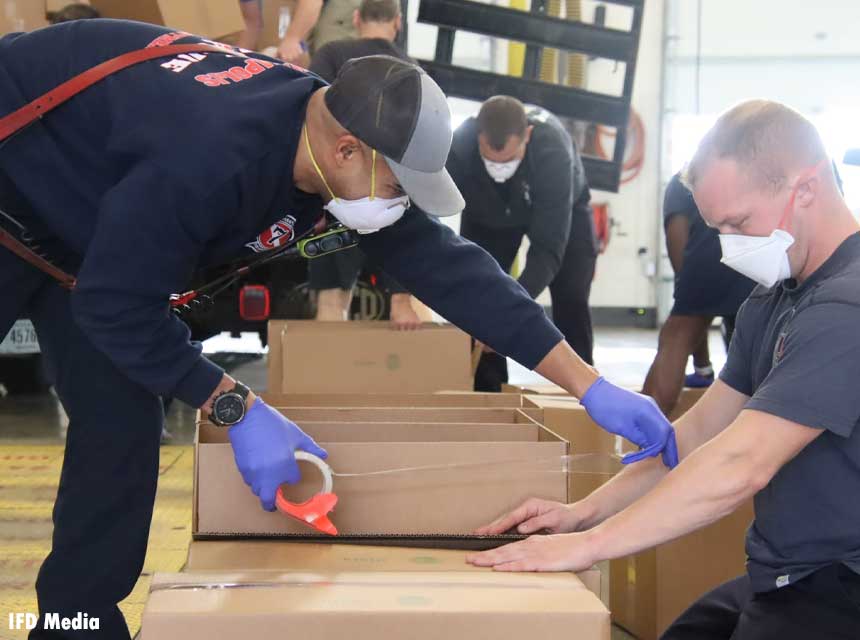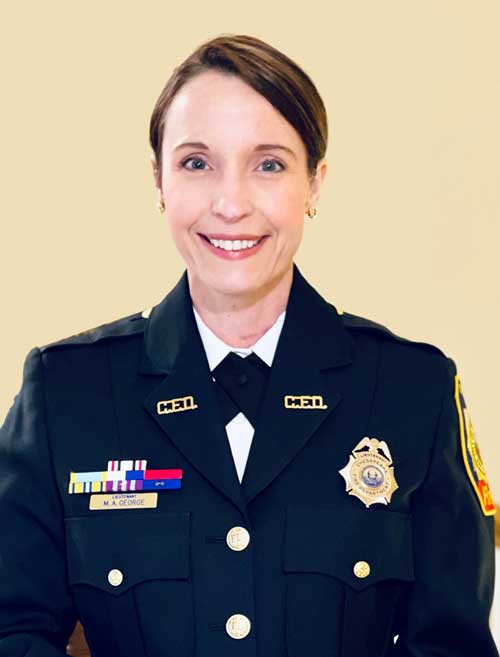
By Mandy George
The federal government has a lengthy and standardized process to secure funds each grant year. The processes include strict timelines and information requirements, whether the grantee organization is the Department of Health and Human Services, the Environmental Protection Agency, or the U. S. Department of Transportation. The COVID-19 pandemic, an unprecedented modern epidemiologic and economic disaster, has temporarily changed the workflow of the entire federal grant system. Once President Trump declared a national emergency on March 13, 2020, the Stafford Act authorized Federal Aid to States as usual. However, additional actions were taken by the Office of the President by Executive Order that gave the heads of the grantee agencies a great deal of flexibility over the entire grant process to ensure applicants and awardees had access to federal funds as quickly as possible.
A New Grant Environment
Why “bend” the rules for this disaster declaration? It was evident early on in the fight against COVID that agencies-public and private-needed all the assistance they could get to protect their health care providers and the members of their communities from a fast-moving, deadly threat. The assistance providers in fire and EMS needed most was in the form of funds to purchase lifesaving supplies such as N-95s, disinfectants, isolation gowns, P-100 filters, Powered Air Purifying Respirators (PAPRs), eye protection, and face shields. Additional funds were also needed for decontamination systems for equipment and the clothing of personnel. Most departments were already functioning with only the bare necessities and the reality of a new contagion quickly exhausted limited supplies. The new grant environment streamlined ways to fund an agency’s personal protective equipment (PPE) needs. This article will outline three of the overarching programs available for PPE purchasing and reimbursement: the CARES ACT, the FEMA Public Assistance (PA) Program, and the Coronavirus State and Local Fiscal Recovery Funds Program.
What Is the CARES Act and Why Should We Care?
According to the U. S. Treasury, the CARES Act created the $150 billion dollar Coronavirus Relief Fund. This fund was established on March 27, 2020, and covers specific expenses related to the public health emergency for the time period of March 1, 2020 to December 31, 2021. The allocation of funds is based on census bureau data and any locality with a population below 500,000 will have their CARES funds administered through their state. However, the expenditures made are determined by the individual agencies based on their needs and must adhere to the following criteria: the expense must be “due to” the public health emergency, must not be originally in the agency’s budget prior to March 27, 2020, and it must be “necessary.”
Each agency can purchase the supplies, equipment, or services they need and then apply for reimbursement of 100 percent of the cost from the state. While these funds can be used for primary first responder related items such as PPE, COVID-19 tests, disinfectants, and transportation, there are larger, programmatic purchases available for reimbursement. For example, communication systems to support enforcement of COVID-related public health orders is a reimbursable expense. Instituting telehealth or telework is a reimbursable expense. Payroll expenses for public safety and similar employees whose jobs are primarily focused on responding to or mitigating the public health emergency are covered expenses. This is significant as the U. S. Treasury in January 2021 decided that all states and localities could presume that their public health and public safety employees met the “substantially qualified” as responding to the COVID emergency test and their payroll expenses could be reimbursed through the CARES ACT from March 1, 2020 to December 31, 2021. Since payroll is one of the largest expenses of most localities, this reimbursement could free up a significant amount of funding for additional resources.
Sharing the Load
The Federal Emergency Management Agency (FEMA) Public Assistance (PA) Program has regularly been available to governments and non-profits after disasters. This program is used to assist agencies and localities in responding to and recovering from national disasters and emergencies. Briefly, the applicant for the grant in a “normal” emergency would have to meet criteria in the following areas: applicant, facility, work, and cost. There are specific timelines which are regulatory deadlines. They are based on the category of the work to be done and whether or not it is emergent or permanent. The PA grant does cover emergency protective measures, but it also covers projects involving public utilities and roads and bridges.
The PA Program is a cost-share grant and the usual percentages are 75 percent and 25 percent. This means that an agency must come up with 25 percent of the cost and the grant will provide the 75 percent. When the president’s national emergency declaration for the COVID-19 pandemic was made on March 13, 2020, FEMA directed the PA program to directly reimburse agencies for COVID related expenses at the 75/25 cost share as long as they did not duplicate the efforts of the U. S. Department of Health and Human Services and the Centers for Disease Control. Some of the specifically approved costs under this program are Emergency Operation Center Operations, specific COVID-19 training and training associated with the public health emergency, disinfection of facilities, medical supplies and medical sheltering, pet sheltering, and security and law enforcement.
On February 2, 2021, a presidential executive order was released that added additional funding to the PA program and changed the cost share to 100 percent. The new guidance is reimbursable expenses incurred from January 2020 to September 30, 2021 will be reimbursed at a rate of 100 percent. This will be done moving forward and it will be completed retroactively with no action required on the part of the applicants. This program is coordinated through each state’s department of emergency management.
Recovery and Rescue
The U. S. Treasury Department’s Coronavirus State and Local Fiscal Recovery Funds Program is part of President Biden’s American Rescue Plan and of its goals are to bring back jobs, replace lost revenue to states and localities, and support COVID-19 response. States, municipal agencies, and local and tribal governments are all able to go onto the U. S. Department of the Treasury Web site and apply for funding through the portal. If funds are approved, most governments will receive the funds in two parts: the first 50 percent will be provided in May 2021 and the second 50 percent will be provided one year later. However, states with an unemployment rate of over two percentage points from February 2020 to the present may qualify for a distribution of 100 percent of the funds at one time.
The categories for this grant are purposefully broad: support public health expenditures, address negative economic impacts caused by the public health emergency, replace lost public sector revenue, provide premium pay for essential workers, and invest in water, sewer, and broadband infrastructure. This fund enables direct payment from the U. S. Treasury to the eligible entity. There is no reimbursement process. To receive the funds, it is important to first register for a Federal DUNS number and then register for an account on SAM.gov to apply for the funds.
Where Do I Begin?
The PPE reimbursement and COVID-19 associated grant processes are multi-layered and the process can seem overwhelming. A great place to start is registering for the DUNS number and SAM.gov account and reaching out to your state grant administrator for specific guidance about these programs as they relate to your locality.
References
Cares Act Sources:
https://home.treasury.gov/system/files/136/CRF-Guidance-Federal-Register_2021-00827.pdf
PA Program Sources:
https://www.fema.gov/fact-sheet/eligible-emergency-protective-measures
https://www.fema.gov/press-release/20210203/fema-statement-100-cost-share
The U. S. Treasury Department’s Coronavirus State and Local Fiscal Recovery Funds Program:

Mandy George is a lieutenant in the Chesapeake (VA) Fire Department. She is a training officer who works with a strong team to facilitate the training needs of a 500-member department of sworn and civilian personnel. She has a master’s degree in emergency and disaster management, a master’s degree in professional writing, and an associate’s degree in emergency medical services. She is also a Nationally Registered Paramedic (NRP).
MORE MANDY GEORGE
Homeland Security Grants and Specialty Teams
Digital Skills in Grant Writing
Get SANE and Stay SANE: Build a Strong Grant Writing Team
Fire Department Interviews and the Informational Vacuum
SIGN UP FOR EXCLUSIVE GRANTS INFORMATION

